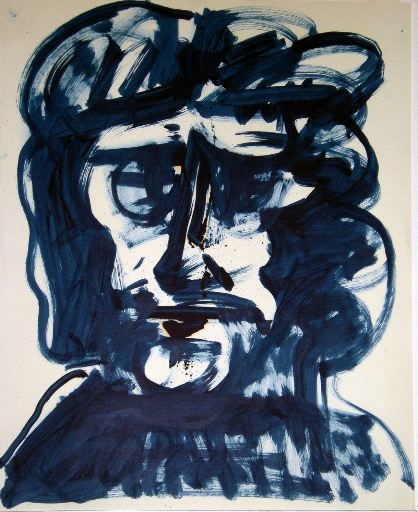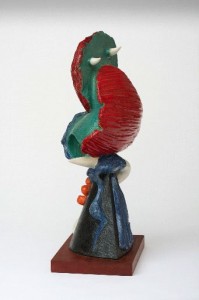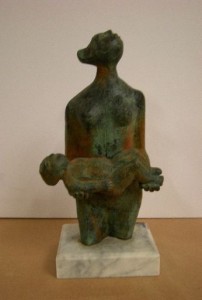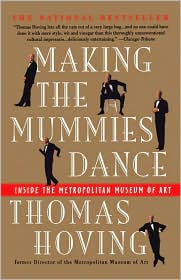
An arts scene is a movable feast, a passing parade of people and ideas. Today’s Portland is vastly different from the big town of the 1950s to the 1980s, when the scene was small and sometimes rowdy but seemed somehow containable, as if you could experience all of it if you tried hard enough.
 Impossible to even think about that now, which must mean Portland’s evolving into a city at last.
Impossible to even think about that now, which must mean Portland’s evolving into a city at last.
A few dominant figures from that smaller but vigorous art scene remain, among them artists Mel Katz, George Johanson and Jack McClarty. They and others like the late Michele Russo, Sally Haley, Hilda Morris and Carl Morris (and even Mark Rothko, who fled Portland for New York as a young man) continue to exert a significant influence on the shape of art in Oregon and the Pacific Northwest.
In whatever ways art here has morphed, it’s built on what these artists and others accomplished — and they, in turn, built on the work of even earlier artists such as the Runquist brothers, Maude Kerns, Amanda Snyder, C.S. Price and Charles Heaney.
 Another big player in those midcentury years, sculptor and printmaker Manuel Izquierdo, died in July. Notable (like so many of his contemporaries) as a teacher as well as an artist, he was also one of the artists who connected the Northwest’s sometimes insular scene to international ideas. He was born in Madrid, left Spain during the Civil War, and spent most of his adult life in Portland. But he brought a European spirit with him.
Another big player in those midcentury years, sculptor and printmaker Manuel Izquierdo, died in July. Notable (like so many of his contemporaries) as a teacher as well as an artist, he was also one of the artists who connected the Northwest’s sometimes insular scene to international ideas. He was born in Madrid, left Spain during the Civil War, and spent most of his adult life in Portland. But he brought a European spirit with him.
Laura Russo Gallery has a memorial exhibition of Izquierdo’s work — most of it from the early 1950s through the 1980s — until Dec. 24. I have a review of it in the A&E section of this morning’s Oregonian; you can read it here. The O ran photos of several of Izquierdo’s more mature abstract sculptures. For a different look, I’m showing some of his other, smaller work here, including the self-portrait at top.
***************
Thomas Hoving, the Indiana Jones of museum directors, died Thursday in New York at age 78. Randy Kennedy has a good obituary here in the New York Times.
 Hoving was a swashbuckler, a showman, a democratizer, maybe even something of a pirate. When he took over the great Metropolitan Museum of Art in Manhattan in 1967, at the age of 35, he declared it moribund and set out to make it the most popular show in town.
Hoving was a swashbuckler, a showman, a democratizer, maybe even something of a pirate. When he took over the great Metropolitan Museum of Art in Manhattan in 1967, at the age of 35, he declared it moribund and set out to make it the most popular show in town.
To the extent that he succeeded — and he radically shifted things before leaving in 1977 — he helped establish the concept of the blockbuster exhibit and set a tone for a whole generation of museum directors: Certainly John Buchanan, former director of the Portland Art Museum and now running the Fine Arts Museums of San Francisco, is a child of Hoving.
The Hoving style is out of fashion — you get the feeling that a lot of priests in the museum world don’t want their temples sullied with actual paying customers — but Hoving figured out a couple of key, simple things for which we can all be grateful: (a) great art is exciting; (b) the potential audience for great art is a lot bigger than the gatekeepers believe. That led, inevitably, to (c) if you make a Big Event out of it, you can get people knocking down the doors to get in.
The excesses and occasional inanities of the blockbuster style eventually put it in disrepute, and the current economic collapse has given it at least a temporary knockout punch: Museums are saving money by reconsidering what’s already in their collections, and in a lot of cases that’s a good thing.
But a couple of things got lost in the counterrevolution. First, Hoving really knew his art, and what he was selling was usually first-rate. Second, not all blockbusters are equal. A surprising number of “big” shows have also had a high level of historic, academic and aesthetic interest. The blockbuster was (and will be again: These things go in cycles) a style of presentation, not a definition of quality. That the style itself, regardless of content, offended a lot of people is … well, interesting.
I like this quote from Philippe de Montebello, Hoving’s successor at the Met, in Kennedy’s obituary for the Times: “People criticized him for his excesses, but you have to remember that it is not the timorous who climb life’s peaks. He has left us with a changed museum world.”
***************


